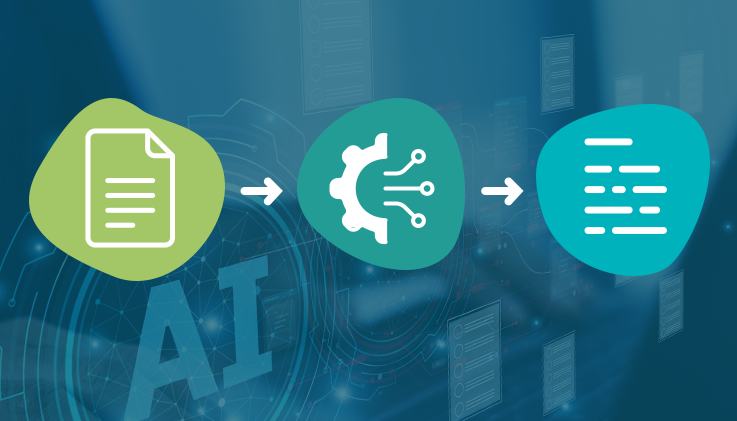Amid prevailing economic uncertainty, consumers are reassessing where their money is spent. Most enterprises these days can clearly see the writing on the wall, and many are formalizing their commitment to customer experience with a strong SLA. The transition of the economy from a profit-centric one to an experiential one has made this possible.
The requirements for establishing a successful business are changing completely. It is no longer about one giant sale. Rather, it is about a thousand small wins that add up to memorable consumer experiences and, eventually, long-term customer retention.
That is why all companies must enable their service teams to function optimally to ensure customers feel valued and supported.
This starts with a commitment to examining the service being provided to assess its availability, timeliness, and quality. Take a long, hard look at what you, as a brand, can offer customers. When your customers need you, it is your chance to show them you deliver on your brand’s promises. This is where service level agreements (SLAs) can help.
Why service level agreements are important
SLAs are contracts that showcase how a service is delivered to a customer. SLAs ensure a smooth relationship between business owners as well as clients. As the name suggests, a service description details all the services to be provided and lays down a functional roadmap by outlining the scope, nature, and details of the services. They ensure a good service standard, manage expectations appropriately, explain liabilities and responsibilities, create frameworks for handling customer queries, and provide support and maintenance whenever any issue arises.
Most importantly, a service level agreement can be formal and legally binding or informal and internal within a specific organization. SLAs set the right expectations and also provide clarity about service delivery. By including essential security and compliance measures within your organization's SLAs, you can remove compliance violations and limit bad actors from creating difficulties.
Also read: How To Design Workflows That Delight Agents And Customers Alike
Key components of an SLA
SLAs are very useful in improving the quality of customer service and engagement. SLAs are primarily meant to reduce costs and increase staff engagement, which will further reduce recruitment, training, and onboarding costs. A good SLA can transform the quality of service and support offered by brands. An SLA can have all or a combination of the following key elements.
- Agreement summary and purpose
- Statement of objectives
- Scope of services to be covered
- Opportunities for training and consultation
- Service provider responsibilities
- Listing conditions requiring on-site support
- Customer Responsibilities
- Mandatory tasks/responsibilities of both parties
- Performance metrics (response time, resolution time, etc.)
- Penalties for breach of contract or exclusions
- Terms and conditions for ending the contract
Six steps to set up an SLA
Creating service level agreements requires diligence, a perfect understanding of your brand’s deliverables, and timeliness in providing clients with them. The steps for creating SLAs are listed below to help readers understand how to create them.
Step 1: Map client objectives against available resources.
Step 2: Define your key performance indicators (KPIs) with baselines.
Step 3: Set up task/process monitoring systems and dashboards.
Step 4: Create documentation and share it with internal stakeholders.
Step 5: Finalize the draft and share it with clients.
Step 6: Collect feedback and incorporate client suggestions to optimize future product/service delivery.
From promise to practice: A scenario to understand SLAs
SLAs are critical for all organizations, regardless of their size or industry. Be it finance, IT, consulting, SaaS, or support, SLAs help your brand strengthen relationships with customers. We know that trust is crucial to running a company. However, having an enforcer of those very terms and conditions that maintain the trust between various parties and business stakeholders is welcome.
SLAs can help align client expectations and build stronger relationships. They are also helpful in cases of conflict and allow managers to gauge their team’s effectiveness in meeting customer expectations. Let us look at a scenario.
Frank is experiencing very poor internet connectivity at his home and office. Frequent drops in upload and download speeds have rendered his internet service provider’s (ISP) service unreliable. Not willing to tolerate the bad service any further, Frank complains to his ISP's customer contact center.
Now, let us assume the utility service provider takes more than four hours to respond to the customer’s complaint. Instead of an immediate resolution, Frank receives a 'delayed' response to his complaint. This resulted in the customer completely losing his cool and getting irritated at the service provider for delinquent services.
After further analyzing the scenario, there can be two possible outcomes. Assume that in the first outcome, the customer’s threat of taking the internet service provider to court is wrong because the turnaround time (TAT) for attending to the customer’s complaint is a minimum of six hours from when the actual complaint was received. In such a case, the Internet connection provider can use the service level agreement as a reference and communicate to the customer that they must wait at least six hours. (or any other amount of time that is stated in the SLA).
The second outcome assumes that the consumer is right in his demand for immediate service. His outburst and litigation warning have merit. If the internet provider delays and disputes the customer’s demand for prompt service, Frank can use the service level agreement as a reference and communicate to the company that they are bound to provide superfast and efficient service.
Here we now understand how SLAs are great tools for holding people or businesses accountable for their words and actions. They are great for contractually obliging businesses and service providers to deliver, besides being an excellent tool to enforce transparency on all parties in all deals.
Service level agreements establish trust between the service provider and the service users. SLA is the first important step towards building a transparent, mutually beneficial, and long-lasting relationship.
You cannot hope to wish away conflicts when doing business with a diverse range of customers. SLAs are excellent dispute resolution tools. In case of genuine conflicts, a business must accept that the SLA has been violated and communicate to its customers the steps they are taking to fix the problem.
Your SLA policy consists of a set of conditions and target metrics such as response/resolution time. Different businesses have different needs. That is why creating a single SLA for all your clients or all functions of your business does not make sense. You can create multiple SLA policies for your business needs. For instance, you may configure two different SLA policies for your standard support services and priority support services. You can also configure automatic escalation levels for SLA violations.
Understanding clauses in SLAs and how to fill them
SLA policies may contain mandatory as well as optional conditions. SLA conditions can evaluate default case attributes and custom fields. When you are prioritizing SLAs, you may want to check for the presence of a term in the message content or define a condition for a specific channel or customer. When creating SLAs in OwlDesk, all the conditions in your SLA must be fulfilled.
For all cases, you must fill in all the conditions that must be true in the first section labeled, “Apply this policy to cases that meet ALL of the conditions.” Fill up the optional conditions or clauses in the section labeled, “Apply this policy to cases that meet ANY of these conditions.”
The only thing to remember is that SLA policies are executed in the order in which they are listed in the SLA Policy Administration tab in OwlDesk. Besides this, the response time for SLAs in OwlDesk consists of the expected first reply time and the resolution time for a case.
A service level agreement is applied every time a case meets the conditions defined in the SLA's configuration. First reply time, resolution time, escalations, etc., apply to the case based on the triggered schedule. Hence, different types of cases or different teams can work on different schedules. Searching, filtering, viewing, editing, deleting as well as deactivating SLAs in OwlDesk, is very easy. All these actions can be performed from the Time Management tab in the helpdesk software.
Also read: The Importance Of Customer Sentiment Analysis
Well-defined SLAs enhance your brand’s customer support experience
By committing to clear service standards, businesses build a foundation of trust and reliability among their customers. These are some advantages that truly set their brand apart.
- Fast (quick response times and low waiting times)
- Effective (resolve the customer need/question and have great communication throughout the process)
- Easy (customers should be able to make contact easily via a range of channels and not have to chase or repeat concerns)
- Quality Assurance (ensure the best product or service is made available to clients)
- Service Availability (reliable and timely service is made available to all your clients at all times)
Besides the above, SLAs also help you attain the following objectives:
- SLA monitoring and tracking
- Prioritization of customer issues
- SLA-based reminders and notifications
- Escalation management
- SLA reporting
Irrespective of the type of your business, understanding your service users’ expectations is the first step in creating an SLA. Directly engage with your users and ask them what exactly they expect from your business.
Helpdesk software contributes to improving customer satisfaction by setting specific service standards and performance metrics. When service providers consistently meet or exceed these expectations, it enhances the overall customer experience and builds trust and loyalty. Sign up for a 30-day free trial now.













